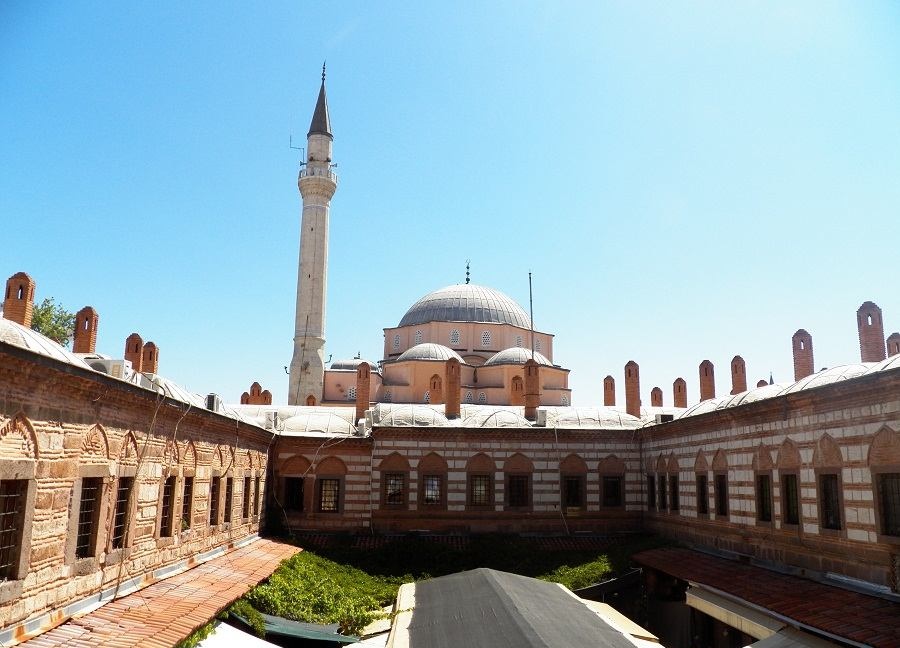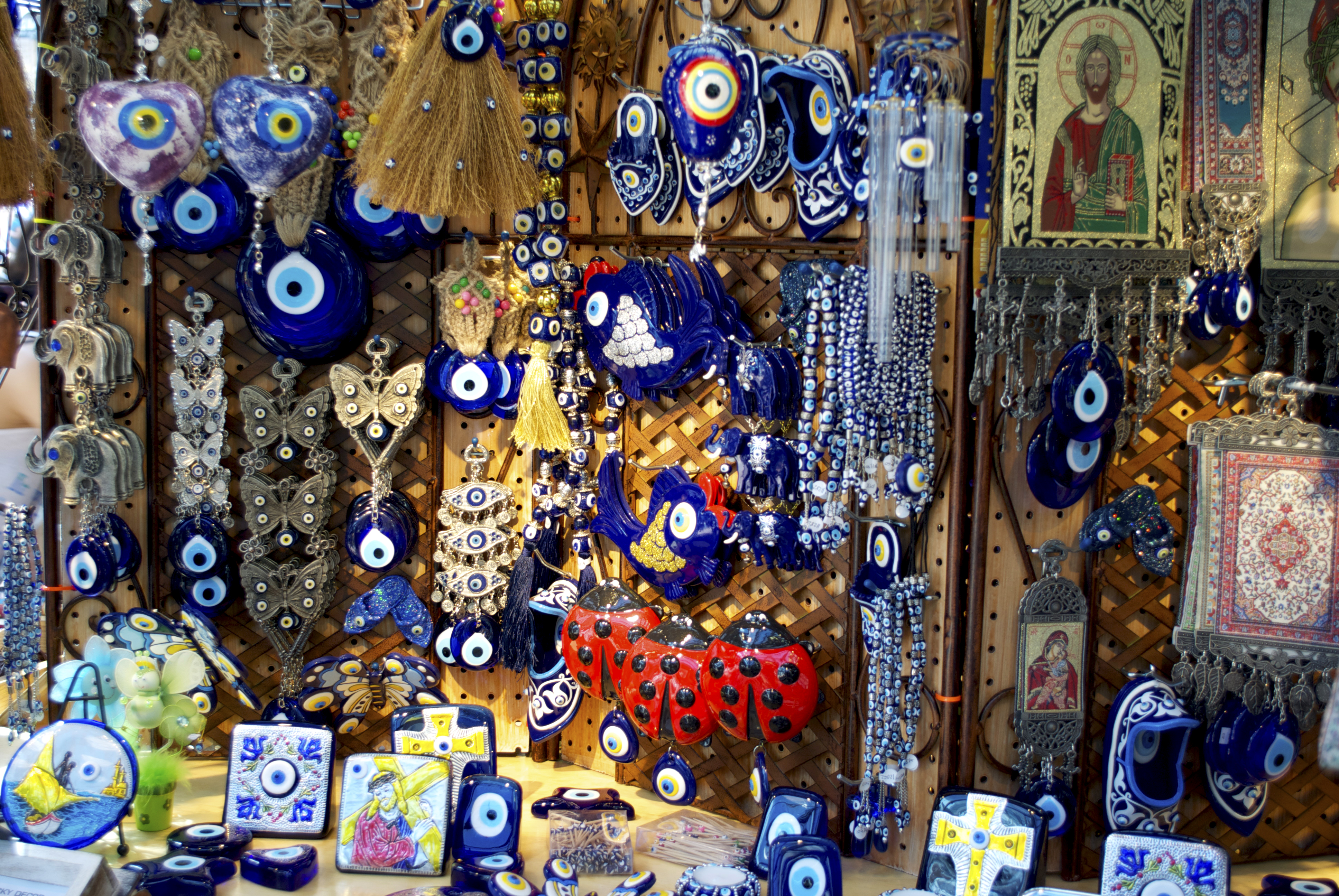|
Görece, Menderes
Görece is a village in the Menderes district of Izmir Province, Turkey. It is known for its production of eye beads. Today, the real eye beads are produced only in Görece and Kurudere (Kemalpaşa) villages near Izmir by a handful of craftsmen, who have devoted their lives to this art. The 3000-year-old antique Mediterranean glass art lives in these eye bead furnaces with its every detail. The roots of the very few glass masters who still practise this age-old tradition goes back to the Arab artisans, who have settled in Izmir and its towns during the decline of the Ottoman Empire by the end of 19th century. The glass art that has lost its glamour in Anatolia, combining with the eye sign, was relived. The masters who practised their arts at Araphan and Kemeraltı, districts of İzmir, were exiled due to the smoke emissions from their furnaces and fire risks to the neighbourhood. See also * Nazar (amulet) A nazar (from Arabic , word deriving from Arabic, meaning ''sight ... [...More Info...] [...Related Items...] OR: [Wikipedia] [Google] [Baidu] |
Menderes, İzmir
Menderes is a district of İzmir Province in Turkey. Overview Menderes district, which is notable for its satsumas, beautiful bays and historical riches, is from İzmir. The antique city of Lebedos is situated in the western corner of the district in Ürkmez locality. Ruins of Kolophon, Klaros, Notion and Lebedos, which are along the Menderes- Selçuk road are next to each other and make up the important archeological sites of the province. Gümüldür municipality is the region that produces the world-famous tangerine breed of satsumas. Özdere is one of the important tourism resorts of the Aegean coast. Beads of various colors and shapes which are produced by the locals in Görece village are particularly of note. The area was called Cumaovası and was a township in the Konak (Centre) district before it became a district in 1988. See also * September 2012 Baradan Bay, Turkey migrant boat disaster The September 2012 Baradan Bay, Turkey migrant boat disaster occurred in th ... [...More Info...] [...Related Items...] OR: [Wikipedia] [Google] [Baidu] |
Turkey
Turkey ( tr, Türkiye ), officially the Republic of Türkiye ( tr, Türkiye Cumhuriyeti, links=no ), is a list of transcontinental countries, transcontinental country located mainly on the Anatolia, Anatolian Peninsula in Western Asia, with a East Thrace, small portion on the Balkans, Balkan Peninsula in Southeast Europe. It shares borders with the Black Sea to the north; Georgia (country), Georgia to the northeast; Armenia, Azerbaijan, and Iran to the east; Iraq to the southeast; Syria and the Mediterranean Sea to the south; the Aegean Sea to the west; and Greece and Bulgaria to the northwest. Cyprus is located off the south coast. Turkish people, Turks form the vast majority of the nation's population and Kurds are the largest minority. Ankara is Turkey's capital, while Istanbul is its list of largest cities and towns in Turkey, largest city and financial centre. One of the world's earliest permanently Settler, settled regions, present-day Turkey was home to important Neol ... [...More Info...] [...Related Items...] OR: [Wikipedia] [Google] [Baidu] |
Eye Bead
A nazar (from Arabic , word deriving from Arabic, meaning ''sight'', ''surveillance'', ''attention'', and other related concepts) is an eye-shaped amulet believed to protect against the evil eye. The term is also used in Azerbaijani, Bengali, Hebrew, Hindi, Kurdish, Pashto, Persian, Punjabi, Turkish, Urdu and other languages. In Turkey, it is known by the name nazar boncuğu (the latter word being a derivative of ''boncuk'', "bead" in Turkic, and the former borrowed from Arabic), in Greece is known as mati ( the evil eye). In Persian and Afghan folklore, it is called a cheshm nazar ( fa, چشم نظر) or nazar qurbāni ( fa, نظرقربانی, links=no). In India and Pakistan, the Hindi-Urdu slogan '' Chashm-e-Baddoor'' is used to ward off the evil eye. In the Indian subcontinent, the phrase "Nazar lag gai" is used to indicate that one has been affected by the evil eye. It is commonly believed that the evil eye can be given in the guise of a compliment, signifying its c ... [...More Info...] [...Related Items...] OR: [Wikipedia] [Google] [Baidu] |
Kemalpaşa
Kemalpaşa is a large town and the center of the district of the same name in İzmir Province, Turkey. Its district area extends immediately to the east of İzmir's easternmost metropolitan district, Bornova, and Kemalpaşa town being at a distance of only from the historical and traditional center of İzmir, ( Konak), it pulsates along with the rhythm of the big city, with corresponding high levels of development in terms of industry and services. İzmir-Ankara highway crosses the district area to the north of the district center. Kemalpaşa district area borders on the administrative divisions of Manisa center in the north, Manisa's depending district of Turgutlu in the east and İzmir's depending districts of Torbalı and Bayındır in the south. The eastern and southern parts of Kemalpaşa district preserve their markedly rural characteristics, which results in an urbanization rate of only 25.7 for the district area as a whole, despite the presence of a strong industrial base ... [...More Info...] [...Related Items...] OR: [Wikipedia] [Google] [Baidu] |
Ottoman Empire
The Ottoman Empire, * ; is an archaic version. The definite article forms and were synonymous * and el, Оθωμανική Αυτοκρατορία, Othōmanikē Avtokratoria, label=none * info page on book at Martin Luther University) // CITED: p. 36 (PDF p. 38/338) also known as the Turkish Empire, was an empire that controlled much of Southeast Europe, Western Asia, and Northern Africa between the 14th and early 20th centuries. It was founded at the end of the 13th century in northwestern Anatolia in the town of Söğüt (modern-day Bilecik Province) by the Turkoman tribal leader Osman I. After 1354, the Ottomans crossed into Europe and, with the conquest of the Balkans, the Ottoman beylik was transformed into a transcontinental empire. The Ottomans ended the Byzantine Empire with the conquest of Constantinople in 1453 by Mehmed the Conqueror. Under the reign of Suleiman the Magnificent, the Ottoman Empire marked the peak of its power and prosperity, as well a ... [...More Info...] [...Related Items...] OR: [Wikipedia] [Google] [Baidu] |
Kemeraltı
Kemeraltı (more fully, Kemeraltı Çarşısı) is a historical market ( bazaar) district of İzmir, Turkey. It remains one of the liveliest parts of İzmir. Location The district covers a vast area extending from the level of the Agora of Smyrna (the quarters of Namazgah, Mezarlıkbaşı and İkiçeşmelik), to the seashore along the Konak Square. It is bounded by the streets Fevzipaşa Boulevard on the northeast, Eşrefpaşa Street on the southwest, and Halil Rıfat Bashaw Street on the southeast, surrounded by ridges of Kadifekale. History The bazaar formed originally around a long street. In medieval times, it was called Street of the Mevlevis, in reference to the presence of a "dergah" (a building designed for gatherings of a Sufi brotherhood). During the 17th Century, this street was filled in, which allowed the bazaar to extend. Today, the street, now called ''Anafartalar Caddesi'' ("Anafartalar Street"), winds to complete the circle of the shallow inner bay in a wi ... [...More Info...] [...Related Items...] OR: [Wikipedia] [Google] [Baidu] |
Nazar (amulet)
A nazar (from Arabic , word deriving from Arabic, meaning ''sight'', ''surveillance'', ''attention'', and other related concepts) is an eye-shaped amulet believed to protect against the evil eye. The term is also used in Azerbaijani, Bengali, Hebrew, Hindi, Kurdish, Pashto, Persian, Punjabi, Turkish, Urdu and other languages. In Turkey, it is known by the name nazar boncuğu (the latter word being a derivative of ''boncuk'', "bead" in Turkic, and the former borrowed from Arabic), in Greece is known as mati ( the evil eye). In Persian and Afghan folklore, it is called a cheshm nazar ( fa, چشم نظر) or nazar qurbāni ( fa, نظرقربانی, links=no). In India and Pakistan, the Hindi-Urdu slogan '' Chashm-e-Baddoor'' is used to ward off the evil eye. In the Indian subcontinent, the phrase "Nazar lag gai" is used to indicate that one has been affected by the evil eye. It is commonly believed that the evil eye can be given in the guise of a compliment, signifying its c ... [...More Info...] [...Related Items...] OR: [Wikipedia] [Google] [Baidu] |
Villages In İzmir Province
A village is a clustered human settlement or community, larger than a hamlet but smaller than a town (although the word is often used to describe both hamlets and smaller towns), with a population typically ranging from a few hundred to a few thousand. Though villages are often located in rural areas, the term urban village is also applied to certain urban neighborhoods. Villages are normally permanent, with fixed dwellings; however, transient villages can occur. Further, the dwellings of a village are fairly close to one another, not scattered broadly over the landscape, as a dispersed settlement. In the past, villages were a usual form of community for societies that practice subsistence agriculture, and also for some non-agricultural societies. In Great Britain, a hamlet earned the right to be called a village when it built a church. [...More Info...] [...Related Items...] OR: [Wikipedia] [Google] [Baidu] |


